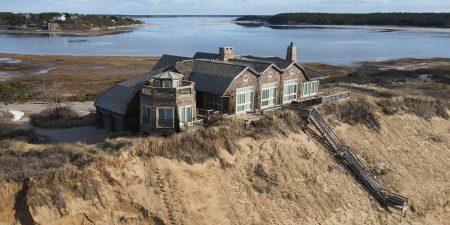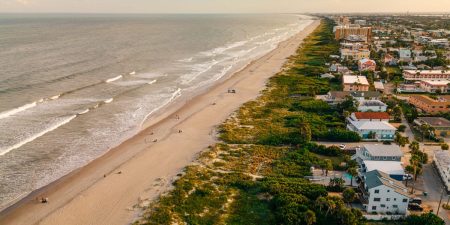The Rising Cost of Living and the Search for Affordable, Community-Focused Housing
Skyrocketing home costs have made it increasingly difficult for Americans to live where they want, forcing many to seek creative solutions to stay close to family and friends while managing affordability. This growing challenge has led to the emergence of new laws, businesses, and communities that prioritize denser, more affordable housing options. These innovations are reshaping the way people live, emphasizing community and connection over traditional single-family home models.
From Group Homes to Intentional Communities: A Personal Journey
The story of Phil Levin, a real estate founder and behavioral scientist, highlights the personal inspiration behind this movement. Levin and his wife, Kristen Berman, decided to move out of their San Francisco group home to have more space for their children. However, they didn’t want to leave behind the close-knit community they had built with their friends. This dilemma led them to create Radish, a compound in Oakland, California, where they now live with about 20 adults and several babies in a variety of houses and apartments on a one-third-acre lot. The community shares outdoor spaces, a hot tub, a guest trailer, and communal indoor areas, fostering a supportive environment where neighbors watch each other’s kids, cook together, and simply enjoy each other’s company. Levin’s experience inspired him to start Live Near Friends, a company that helps people find real estate opportunities to live closer to family and friends, such as duplexes or lots that can accommodate multiple small homes. Levin believes that having a support network within a five-minute walk is the key to a happy life—and it might also be the key to more affordable housing.
The Rise of "Missing Middle Housing"
States and cities across the U.S. are legalizing so-called "missing middle housing," which includes duplexes, townhomes, small apartment buildings, backyard tiny homes, and converted garages. These housing types offer cheaper options and greater diversity than the detached single-family homes that dominate the American urban landscape. They also promote communal living, making it easier for urban dwellers to stay in their neighborhoods rather than being priced out to isolating suburban subdivisions. Levin’s Live Near Friends connects clients with real estate agents, developers, and architects to bring their visions of community-oriented living to life. Levin hopes to show developers and city planners that there is a growing demand for medium-density housing that prioritizes social connection over isolation. He draws a comparison to Airbnb, which reshaped housing markets by aggregating demand for short-term rentals. Similarly, Levin wants to transform how housing is developed by emphasizing the importance of social connection.
Families and Friends Embrace Multigenerational Living
The demand for community-focused housing is evident in the story of Anjan, a Silicon Valley software engineer who wanted to keep his multigenerational household together. Anjan and his wife are building a second home on the same lot as their single-family house in Fremont, California, so his parents can live steps away from their two grandchildren. This arrangement, made possible by new state laws that allow lot splitting and redevelopment, has significantly improved their quality of life. Anjan notes that having his parents close by makes a huge difference, providing emotional support and practical help. This trend reflects a broader shift toward multigenerational living, which not only strengthens family bonds but also offers a more affordable housing solution.
The Appeal of Intentional Communities
Catherine Woodiwiss, a 38-year-old design researcher, exemplifies the demand for intentional communities. Woodiwiss spent her 20s and early 30s living in group houses with fellow creatives and activists in Washington, D.C., and later in Austin, Texas. These shared living arrangements were not only more affordable but also fostered deep friendships and collaborative projects. However, when her Austin group house disbanded in 2023, Woodiwiss found herself moving into a small apartment alone—a stark contrast to her previous communal lifestyle. While she appreciates the independence and "headspace" of living alone, she still longs for the sense of connection and intentional community that group living provided. Her visit to Radish, Levin and Berman’s Oakland compound, reignited her desire for a more structured and communal way of living.
Companies Step In to Meet the Demand
BuildCasa, an Oakland-based firm founded in 2022, is one of the companies responding to the demand for more affordable and community-focused housing. The company works with homeowners and developers to subdivide lots and build additional homes, such as the second home Anjan is constructing for his parents. The homes built on these properties are typically between 800 and 1,200 square feet and sell for 30 to 40% less than the average single-family home in the same neighborhood, according to BuildCasa co-founder and CEO Ben Bear. Paul Steidl, the company’s co-founder and architect, grew up in a mixed-use neighborhood of townhomes in Pittsburgh, which shaped his support for missing middle housing. He recalls the convenience and sense of community that came with living in a walkable neighborhood, where neighbors were always nearby. BuildCasa is part of a growing movement to create housing that prioritizes both affordability and social connection.
A Growing Trend Toward Communal Living
Grant Taleck, a content creator and advocate for communal living, is another example of how individuals are driving this trend. Taleck is building an accessory dwelling unit (ADU) in his backyard in Greenville, South Carolina, a city that has recently loosened its development codes to allow for more sociable living options. Taleck’s videos about communal living and "cottage courts"—clusters of starter homes—have gone viral, resonating with people who crave walkable, community-oriented neighborhoods. He has already convinced his mother and one of his best friends to move to Greenville, drawn by the city’s mixed-use design, walkability, and abundance of "third spaces" that foster social interaction. Taleck’s story highlights the growing interest in intentional communities and the role individuals play in shaping the future of housing.
In conclusion, the rising cost of living and the desire for affordable, community-focused housing are driving a shift toward denser, more socially oriented housing models. From intentional communities like Radish to companies like Live Near Friends and BuildCasa, this movement is reshaping the way people live, emphasizing connection and collaboration over isolation. As more states and cities legalize missing middle housing, the demand for these innovative living arrangements is likely to grow, offering hope for a more affordable and community-rich future.












